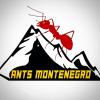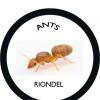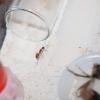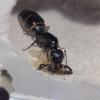If you read Camponotus journals on here, you’ll see how few colonies last long term. A lot of keepers have run into similar problems with colonies dwindling over time. There are exceptions, but it seems like some Camponotus species are not suited for captivity in the long term. Some have theorized that it has to do with their Bloachmania stomach bacteria levels dwindling over time due to some nutritional deficiency. Supplementing with sources of urea is something some have tried, but I don’t think anyone has found the exact answer.
Hm never heard of such an issue.I've been somewhat active in the hobby for 4 years now.
But i guess it could be true, probably most colonies even the super large ones i have seen in captivity are probably just over 4 years old, somewhat.
But again this is new info to me.Tbh i think its probably something to do with acrylic, I've had poor luck with these nests in general and it wouldn't be suprising if that was the reason.
Acrylic is not absorbent, so maybe an accumulation of formic acid on the floor of the nest is the issue.I have read about this before, that ants from the Formicinae family arent well suited for acrylic.
I should have listened.I was thinking of replacing all my acrylic nests anyway in the near future...This was the last straw.Unfortunately if formic acid is the problem the colony is as good as dead...



















